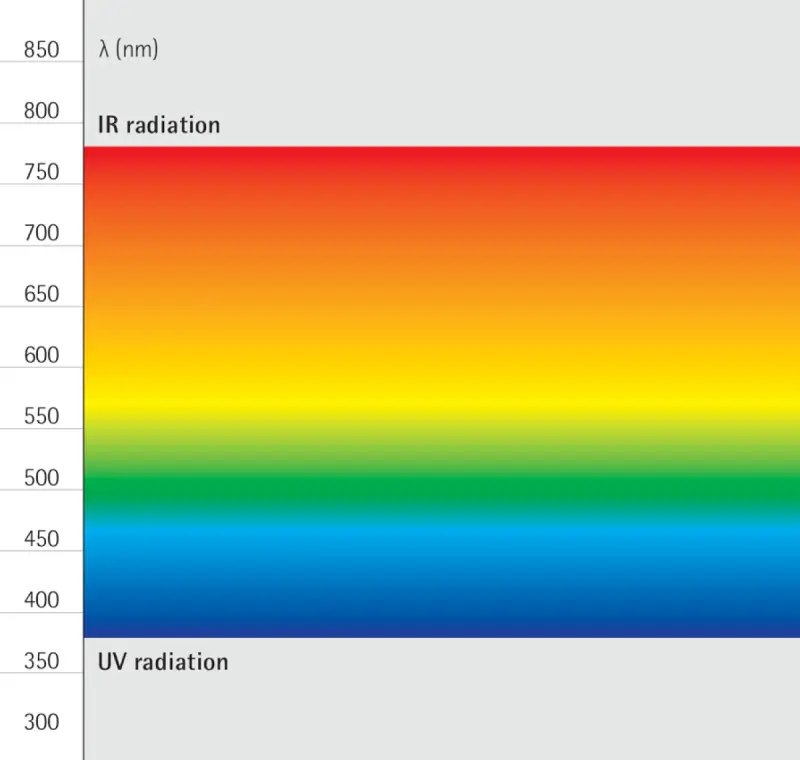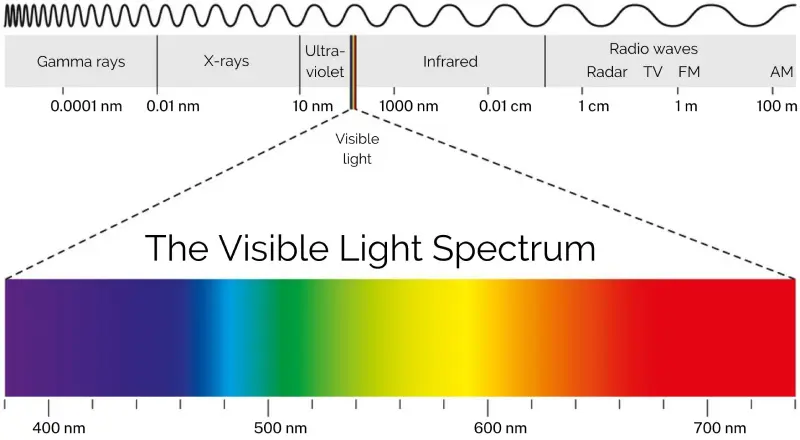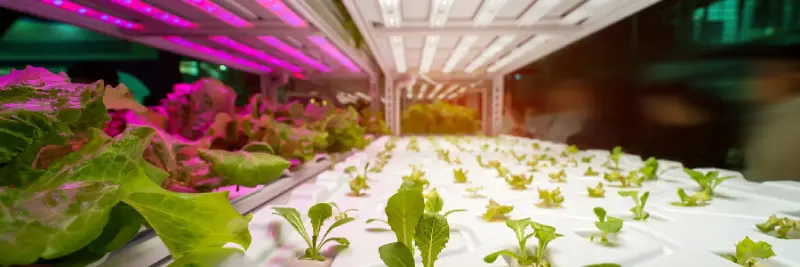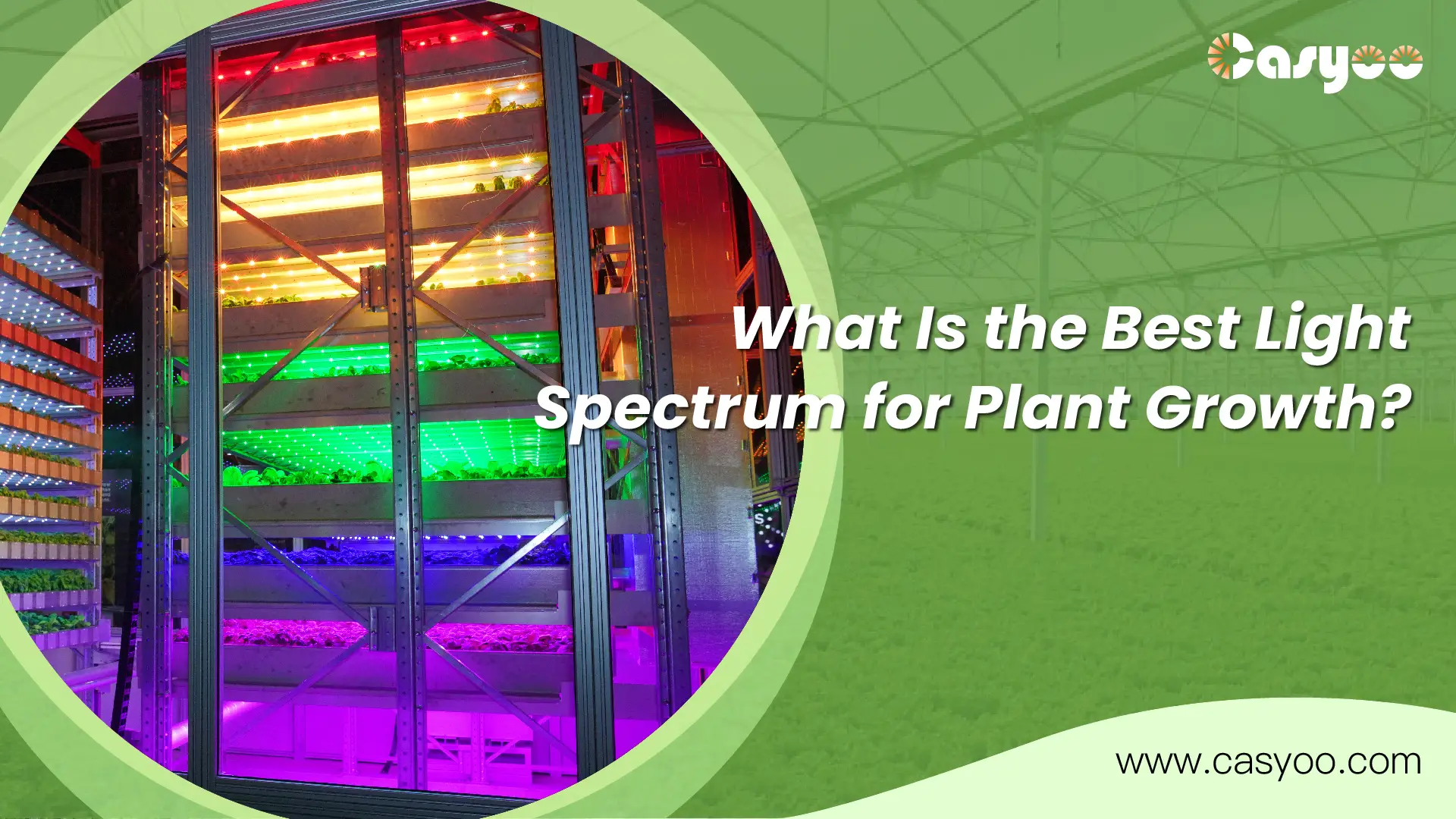In this article, we’ll discuss the light spectrum, a vital factor you should consider when purchasing an LED grow light. Your plants won’t thrive if they don’t get the best light spectrum for plant growth.
What is the light spectrum?

The light spectrum is a graphic representation of each color in light. Scientists refer to colors by wavelength rather than color name, which is a more accurate way to measure color. Therefore, the wavelength of the red spectrum might be 630 or 660. Both wavelengths appear red to our naked eyes, but in fact, they are different colors.
Growers who use fluorescent grow lights refer to the color of the bulbs as cool white or warm white. This works great for fluorescent lights, but this doesn’t work for LED lights. When it comes to LEDs, it’s more accurate to use wavelengths to show the actual color spectrum.
Effects of light spectrum on plants

Without the correct growing spectrum, your plant’s growth process may be hindered or even halted entirely.
Red light
It is most important for photosynthesis because chlorophyll A absorbs red light best. Red light promotes stem elongation, leaf growth and flowering. It also enhances the production of anthocyanins, the pigments that give crops their red, purple and blue appearance. But using red light alone is not good for plant growth either.
Blue light
Blue light plays a vital role in vegetative growth and leaf development. It stimulates chlorophyll production and spurs photosynthesis, making plants stronger. This spectrum also helps regulate crop growth and keep crops compact. Excessive blue light is detrimental to plant growth. The combined spectrum of red and blue light can promote the growth of crops better than using red light or blue light alone. Different plants require different combinations of red and blue light.
Green light
Green light, while not as effective as the above two lights in terms of plant growth, can penetrate deeper into the plant canopy, resulting in more uniform growth.
Full spectrum
Full spectrum grow lights balance all of the light spectrum needed for plant growth, therefore they are suitable for the entire growing cycle.
UV rays
UV spectrum does not directly help plant growth, but it can help plants produce more secondary metabolites, such as flavonoids and terpenes, thereby improving the flavor, aroma and nutritional value of plants. At the same time, it helps the crops grow stronger stems and leaves.
Factors that determine optimal light spectrum for plant growth
Now you know the effects of the different spectra on plants. You may be wondering what color of light is best for growing plants. We’ve rounded up some factors to consider.
Growth stage
Plants grow from seedlings to vegetative growth and then to flowering and fruiting. The optimal spectrum is suitable for different growth stages.
Plant types
While most plants require both blue and red light, with blue light aiding vegetative growth and red light aiding flowering and fruiting, the ratio of this combination of red and blue light varies by plant species. For example, succulents require more red wavelengths to bloom and produce fruit, while a balanced ratio of red and blue light is more suitable for leafy greens and herbs.
Growing Environment
Are your crops grown indoors, hydroponically, in a greenhouse, or outdoors? Depending on the growing environment, the optimum spectrum for plant growth will vary. For example, outdoor planting requires sunlight, which depends on the season and weather conditions. Therefore, conditions such as temperature and humidity should also be considered when determining the optimal growth spectrum for outdoor plants.
What light spectrum does your plant need at different stages of growth?
Seedling stage
During the seedling stage, a higher proportion of blue light is ideal. Blue light (400-500nm) promotes chlorophyll production and root development and keeps the crops compact. This spectrum enhances photosynthesis and makes seedlings stronger.
Vegetative stage
During the vegetative growth stage, plants require a balanced combination of red and blue wavelengths for plant growth. Blue light helps promote root development and maintain the compactness of the plants. Additionally, red light encourages photosynthesis and promotes leaf and stem development.
Flowering stage
During the flowering phase, a higher proportion of red wavelength is suitable. Red light stimulates flower bud production, increases flower size, and prolongs flowering time. It also helps synthesize certain essential oils and pigments responsible for flower coloration.
What light spectrum do the plants you grow need?

Light spectrum for marijuana
Using the correct spectrum for your cannabis will produce more buds and help the buds become more potent. During the seedling stage, blue light is important to promote rapid growth. Adding red wavelengths in the blooming phase will induce budding and flowering.
Overall, marijuana will always require a red and blue spectrum, with a higher ratio of one or the other depending on the growth stage. This is why many marijuana growers will start their cannabis with a high proportion of blue light and then switch to strong red light as the crops enter the blooming phase.
Light spectrum for vegetable
LED grow lights for vegetables have a higher ratio of blue light than lights designed specifically to promote flowering. Blue light promotes the production of chlorophyll, making it suitable for planting leafy greens and herbs.
Light spectrum for flowers and fruits
If you want to promote plant flowering and fruiting, choose a grow light with a higher proportion of red light. Red light promotes flowering, which is important for plants grown for fruit or flowers. While full spectrum grow lights contain full spectrum light, you can support the blooming phase by providing additional red light.
Final Thoughts: the best light spectrum for plant growth
Providing the best light spectrum can harvest robust plants and enhanced flavor. You need to consider your plant type, growth stage, and growing environment to choose the best light spectrum. Fortunately, full spectrum LED grow lights are the most versatile option.
Casyoo is a reliable LED manufacturer that offers top-notch LED grow lights. With 17 years of experience in developing grow light solutions, we can provide the ideal light recipe for your plants. Contact us now!




